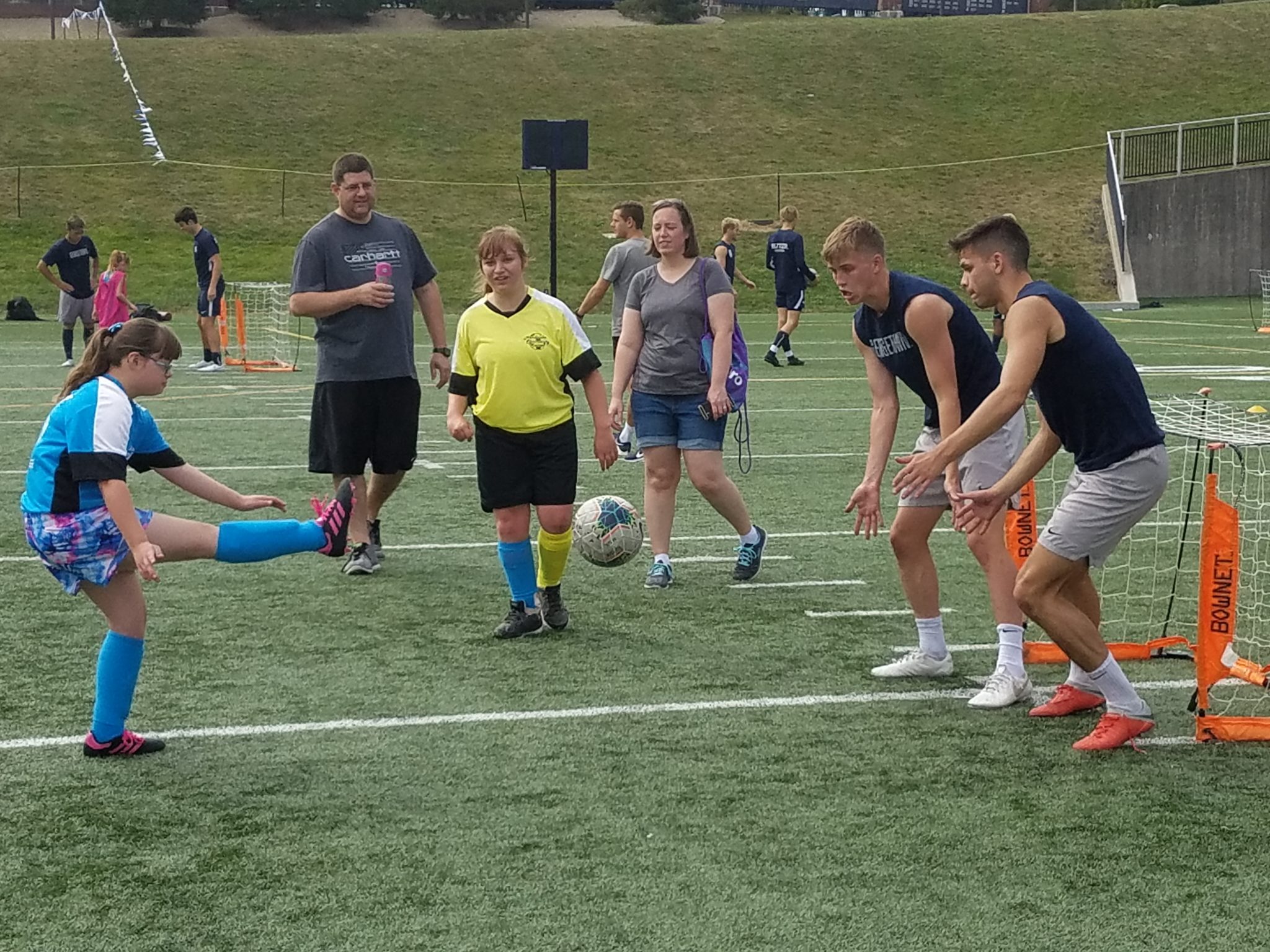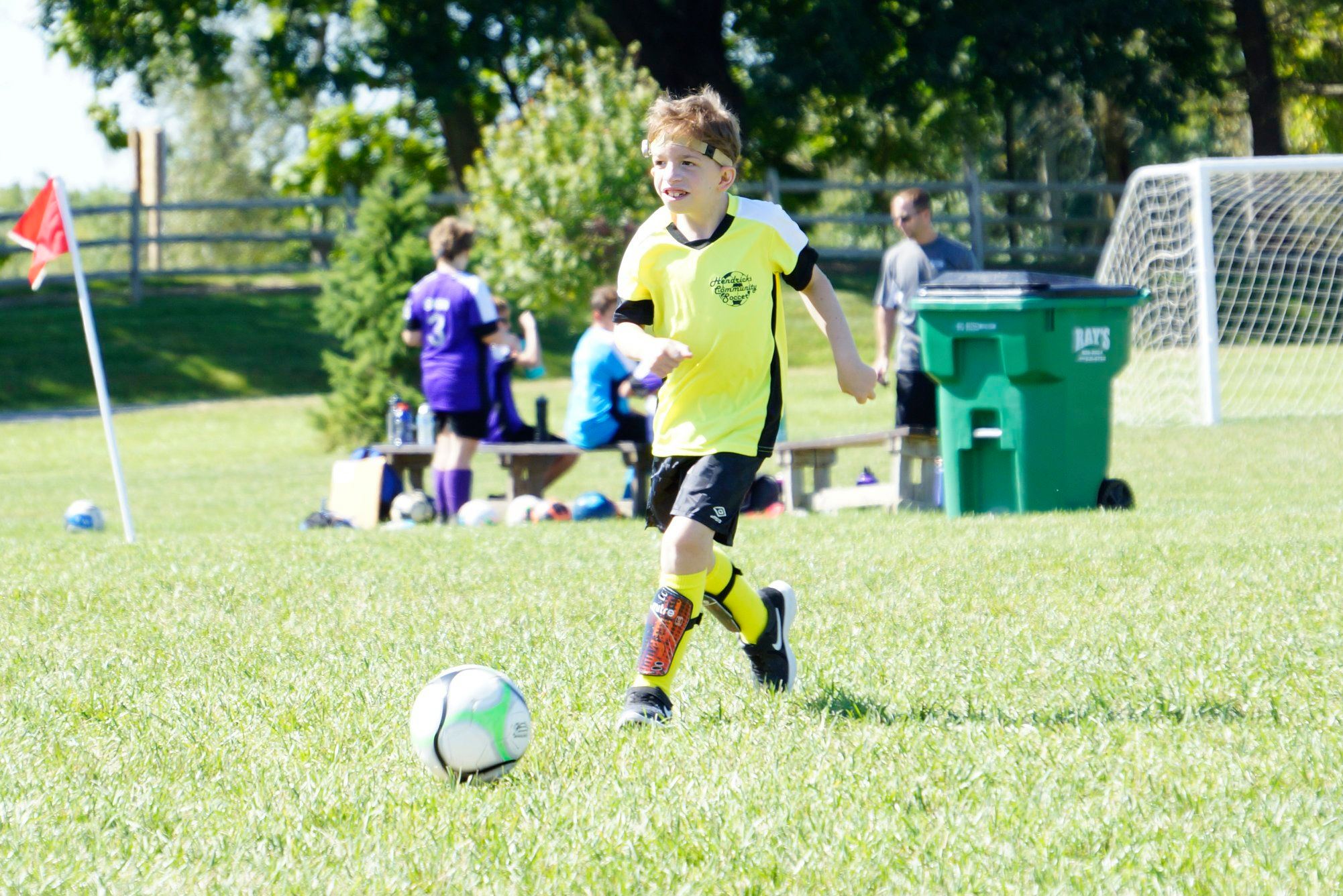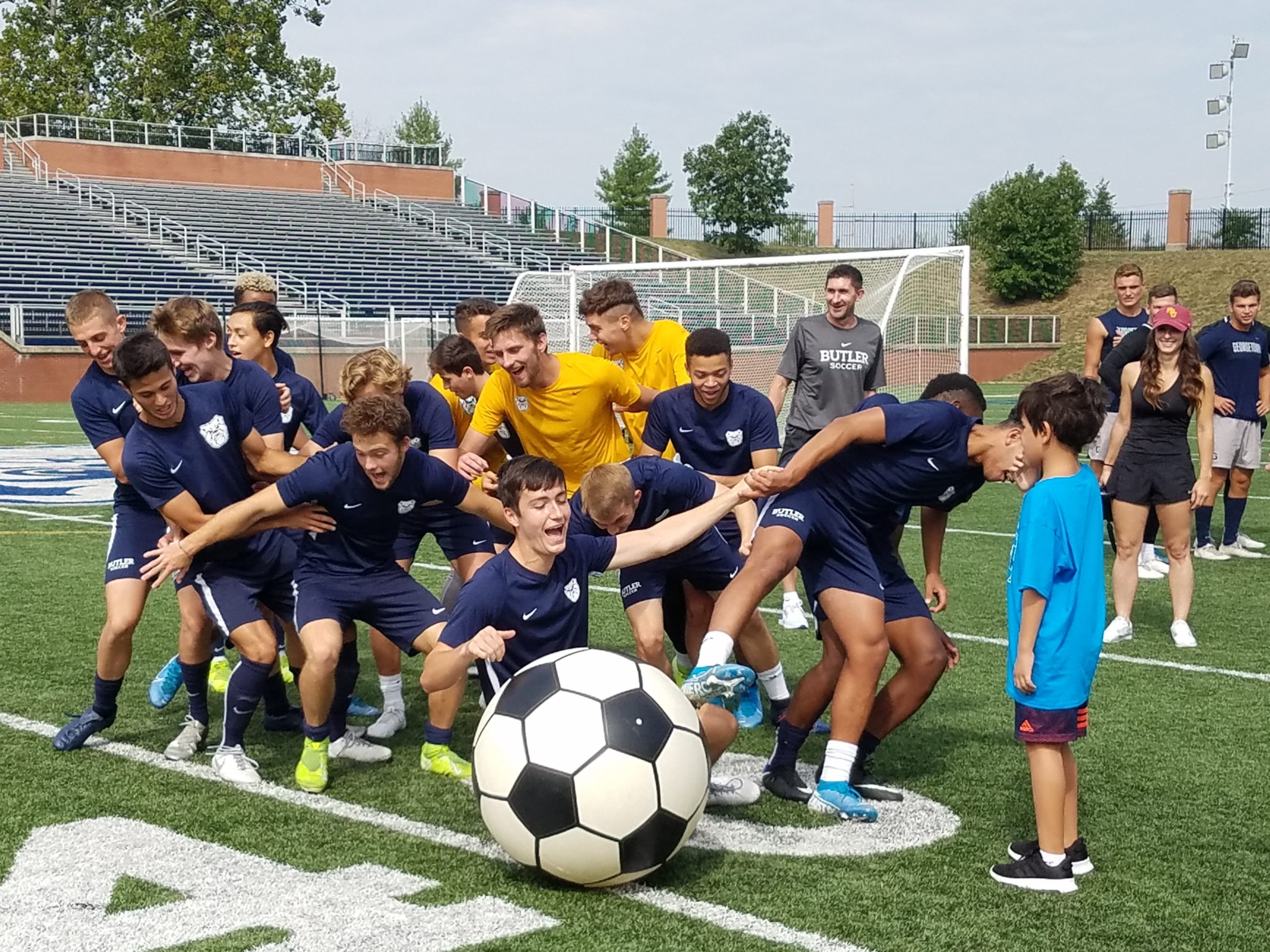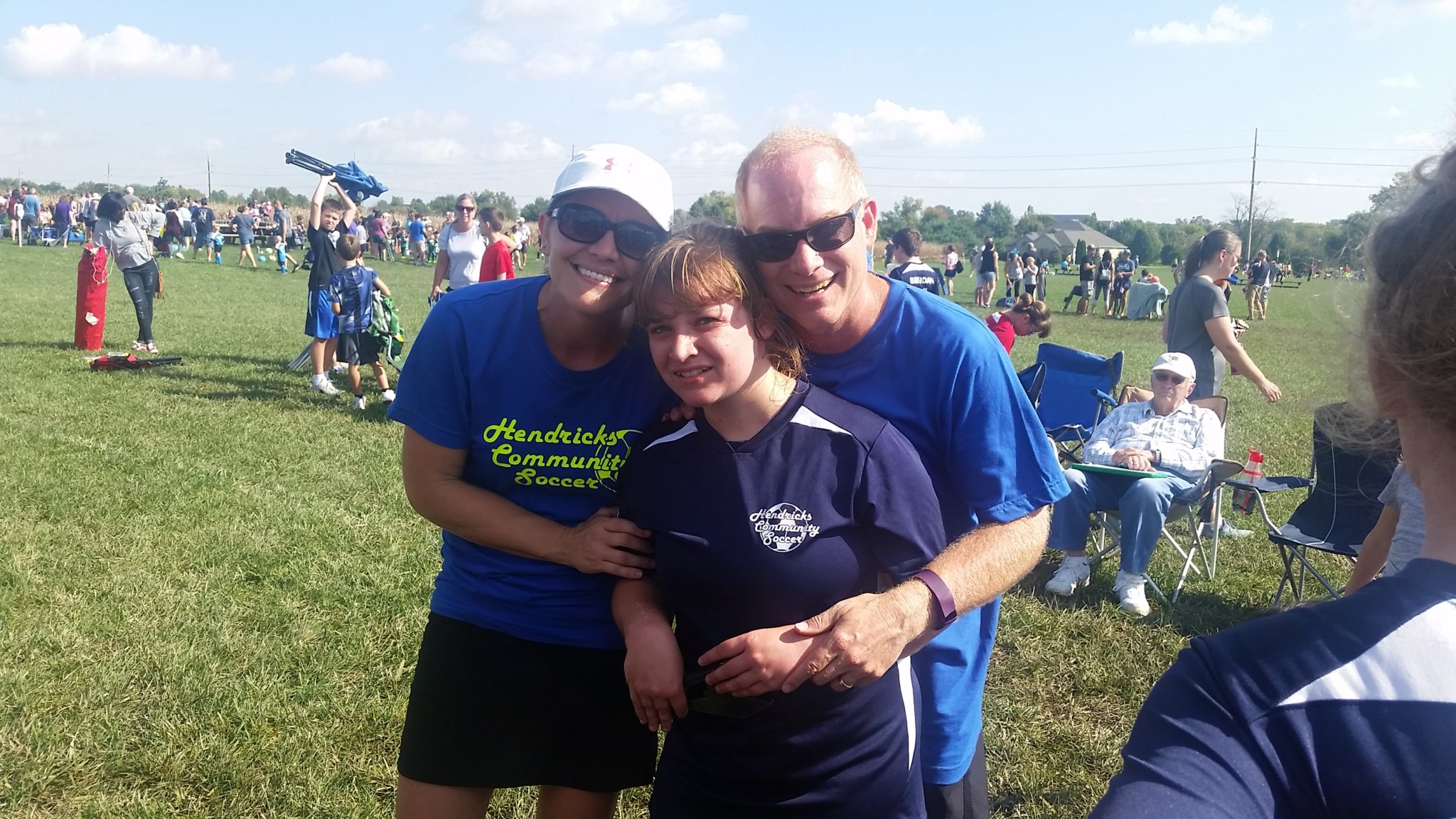STAR Soccer Program Welcomes Kids With Special-Needs
Photography Provided
Sometimes the greatest ideas are sparked by a single question. Such was the case for Dave Romie when, in 2009, he and his family were attending a league soccer picnic for his oldest daughter Mariea and youngest son Quinn. After everyone had finished their hot dogs and potato chips, the kids started playing soccer. Romie’s middle child Mady, who was nine years old at the time, wanted to play too, so Romie kicked the ball to her and she fired it back. Romie and his wife Susan were delighted by how skilled Mady was, given that she has special needs. They also loved seeing her light up each time her foot made contact with the ball.
Later Susan asked Dave why Mady couldn’t play in a soccer league. He immediately went home and did some research. When he learned there weren’t any special-needs soccer programs in the area, he felt compelled to start one himself. Romie found a community-based training program online that outlines step-by-step instructions for anyone starting a program for athletes with intellectual, emotional, and/or physical disabilities.
“I quickly found that those who had a program loved to talk about it and were happy to offer advice on how I could get one up and running,” says Romie, who did just that in 2009.
In the fall of 2013, Romie partnered with Hendricks Community Soccer (HCS), which has approximately 1,200 players ranging in age from four to 20. Romie teamed with HCS to create the STAR (Success Through Adaptive Recreation) soccer program.
For the first STAR season, 11 players registered to play. Last fall, that number climbed to 30. Fall and spring STAR leagues are offered, and registration for the program is free as all costs are absorbed through HCS and sponsors. For the past two seasons, Big O Tires in Brownsburg and State Bank of Lizton have sponsored the STAR program. Spring practices start in the third week of March, and games begin in mid-April.
The STAR program is similar to the other recreational programs offered through HCS. For example, all programs including STAR hold practices during the week with games on Saturdays. STAR athletes are issued the same uniforms as the other teams in the club, and receive the same trophies at the end of the season.
“They also get a team picture and receive the same post-game treats, which is the best part,” Romie says. “We try to make the program like a regular rec team, but what that looks like for each individual player varies.”
STAR athletes are encouraged to participate in practice drills, but if STAR kids would rather kick the ball around with a helper on the sidelines, that’s fine too. There are no rules.
“Our number one goal is to make sure the kids have fun each week,” Romie says.
STAR athletes don’t play against other clubs. Instead, each Saturday the kids play academy style, meaning the kids that show up play against one another. The athletes are split into two groups – those who crave competitive play and those who don’t. The competitive component is for kids who focus and move the ball. For the non-competitive players, it’s more of a playground atmosphere with lots of balls to kick around.
 “It gives the non-competitive kids time to play with the ball rather than chasing up and down and never getting in touch with it,” says Romie, who enjoys watching the children evolve as each season progresses.
“It gives the non-competitive kids time to play with the ball rather than chasing up and down and never getting in touch with it,” says Romie, who enjoys watching the children evolve as each season progresses.
“We get kids who can’t do a lot physically at first, but by the end of the season they are steadier and have better muscle tone. Their confidence improves too.”
Volunteers come each week to help with Thursday practices and Saturday games, and throughout the season Romie invites area soccer teams to play with the STAR league. Players from local high schools including Brownsburg, Avon, Bethesda, Tri-West and Cardinal Ritter have all participated.
“It’s good on both sides,” Romie says. “Our kids love it because it gives them a comfort level with the typical kids. And for the other kids, it’s great exposure to those with special needs. It makes everyone more comfortable with one another because on a soccer field, everyone is on a level playing field, sharing common passion for the game.”
On certain Saturdays during the season, soccer players from university teams play with the STAR kids, including Marion, IUPUI, Purdue, and Butler. To strengthen the bonds, leaders at those schools have also invited the kids to attend their games as spectators. Last fall STAR players were invited to watch Butler play Georgetown. The following day, Butler leaders invited the kids to come to their field and play with both the Butler and Georgetown players, who remained in town a few extra hours so they could be included.
“That was a cool experience,” Romie says.
Paul Snape, head coach of the Butler Bulldogs men’s soccer team, says that playing with the STAR soccer team is one of the highlights of their season.
“We’ve been doing this for the past two or three years,” Snape says.
“The kids are full of energy, passion and love for this beautiful game. It’s a wonderful couple of hours.”
Besides college teams, a number of community organizations have also participated including the Brownsburg fire and police departments, the staff at K1ds Count Therapy and various Boy Scout troops.
“Getting the community involved is one of my favorite things,” says Romie, who is grateful for his STAR helpers and assistant coaches, two of whom have disabilities themselves. “They are so amazing. Everyone who helps shares the same passion for soccer. We all want to provide that great experience for the kids, and it’s humbling that we’re able to do so.”
Romie recalls a special moment he had with a little boy who played in the STAR program a couple of years ago. When the kid first started, he was drastically unfocused.
“He mostly just loved to run,” Romie says. “He’d never kick the ball.”
One day, however, Romie picked up a soccer ball and put it between the two of them, repeatedly encouraging the boy to kick it. Halfway through practice, something clicked.
“He started kicking the ball once, then twice, then three and four times,” Romie says. “It was so neat to see him participate.”
Because the STAR players vary in skill and ability levels, the helpers encourage ball sharing during games and practices.
“Our goal is to let each kid score once or twice per game,” Romie says. “Some of the kids who are new and competitive see the goal and the ball, and that’s all they see. They have a hard time understanding that we want everybody to score.”
Before long, however, the players tend to catch on.
“It’s neat when they start screening other players or even grabbing a player’s hand and helping him toward the ball,” Romie says. “That’s what it’s all about.”
For more information on the STAR program or to become a club sponsor, email Dave Romie at dromie@hendrickssoccer.net. For more info, visit hendrickssoccer.net.





